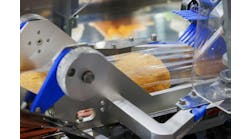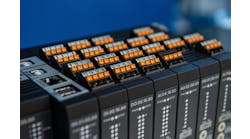Way back when, I declared that PC-based control would take up over 40% of the market from the standard firmware-based PLC. Why?
Because of the cost and the availability of having the control, as well as the HMI, on the same machine. The operating systems were varied, from Windows to VxWorks real-time OS. Various OS kernels were developed to provide a more real-time response to occurrences in the field due to the interrupt-based systems, typically, the IBM PC platform. A problem arose, however, since basic hardware configurations were used. These included things such as a CD drive and more interrupt-driven resources that were placed on the system.
So the platform was redefined, and finally the control software had a good place to execute the algorithms and code needed to control the process.
[javascriptSnippet ]
We take so much for granted in a PLC environment because our interface to it is a slick programming environment—an integrated development environment (IDE)—which provides all the commands and instructions needed to create, download and monitor the process software.
With PC-based control it was no different. You would never really know the difference by looking at the screen where you would create and monitor your application software.
Windows CE was a common platform for embedded OS-based systems. The IBM PC board design and chipsets were copied into different form factors, such as PC104, VME bus and PCI. This allowed the control software to reside in an embedded system and allowed for better control methodologies.
One of the very first PC-based control systems was a product called FloPro which was developed by Ron Lavallee in the mid-1980s. It was based on flowcharts, which constitutes a decision-by-decision method of creating a process flow.
However his first go-round was a post processor that took flowchart symbols and converted them to ladder logic using code that was generated on an HP-85, which is another story.
In fact he demonstrated his development to Gould Modicon, which made overtures about buying the technology but moved away from it for some unknown reason.
FloPro moved over to the IBM platform, and, with the addition of a communication card to connect to Allen-Bradley remote IO system, FloPro made it into the development world at General Motors, and a new paradigm was born.
Sequential function chart (SFC) was alternative-state-based control software that was used in PLC firmware. It is now available in many hardware formats, and has replaced flowcharting as a control software state-based system.
Mike Klein started a flowcharting company called Steeplechase, which had early success in the world of computer-based control. It was Windows-based and provided a much better interface than FloPro by all accounts. Steeplechase formed alliances with various companies and in fact spawned additional flowcharting companies such as Think & Do.
[pullquote]Another company that was formed because of FloPro was FlexIS process control. It was a post processor that took SFC programming of the control algorithms and converted that to Allen-Bradley’s PLC-5 subroutines in ladder logic. It was really slick and very well done, but there was some pushback from the industry regarding these graphical languages because the development minds really didn’t think in the way that was needed. Their minds were geared for ladder-logic development, and most of the development occurred one rung at a time.
I actually ran into a system at the Nike distribution center in Toronto that was still running Steeplechase flowcharting software. If anything went wrong, they would have no resources to help, I would suspect. And therein lies the rub.
It is all well and good to have a novel idea and a new way of creating a controlled process program, but you have to have the resources to create, as well maintain, the end result. FloPro ran into a brick wall after a project in Windsor, Canada, as the integrator reportedly blasted the software for really bad visualization and the lack of tools for troubleshooting.
IEC 61131 has been around for almost 30 years and compliance with it is now becoming accepted as a control software platform. Beckhoff Automation uses a PC-based hardware platform and runs IEC-61131-compliant control software on the machine, which also includes the HMI. This emulates the original perceived benefit of the original reason for PC-based control.
Control software has morphed over the past 40 years, but interestingly enough most processes are still PLC-based and mainly created with ladder-logic implementations.
Almost every survey done in the past 10 years has ladder logic being the leader in how processes are controlled.
And, as luck would have it, the PLC is far from dead, but PC-based control is nowhere near the potential it could have risen to. It’s interesting that Rockwell Automation’s new ControlLogix platform has the opportunity to run Windows-based software.
A PC in a PLC—so, which is it?






